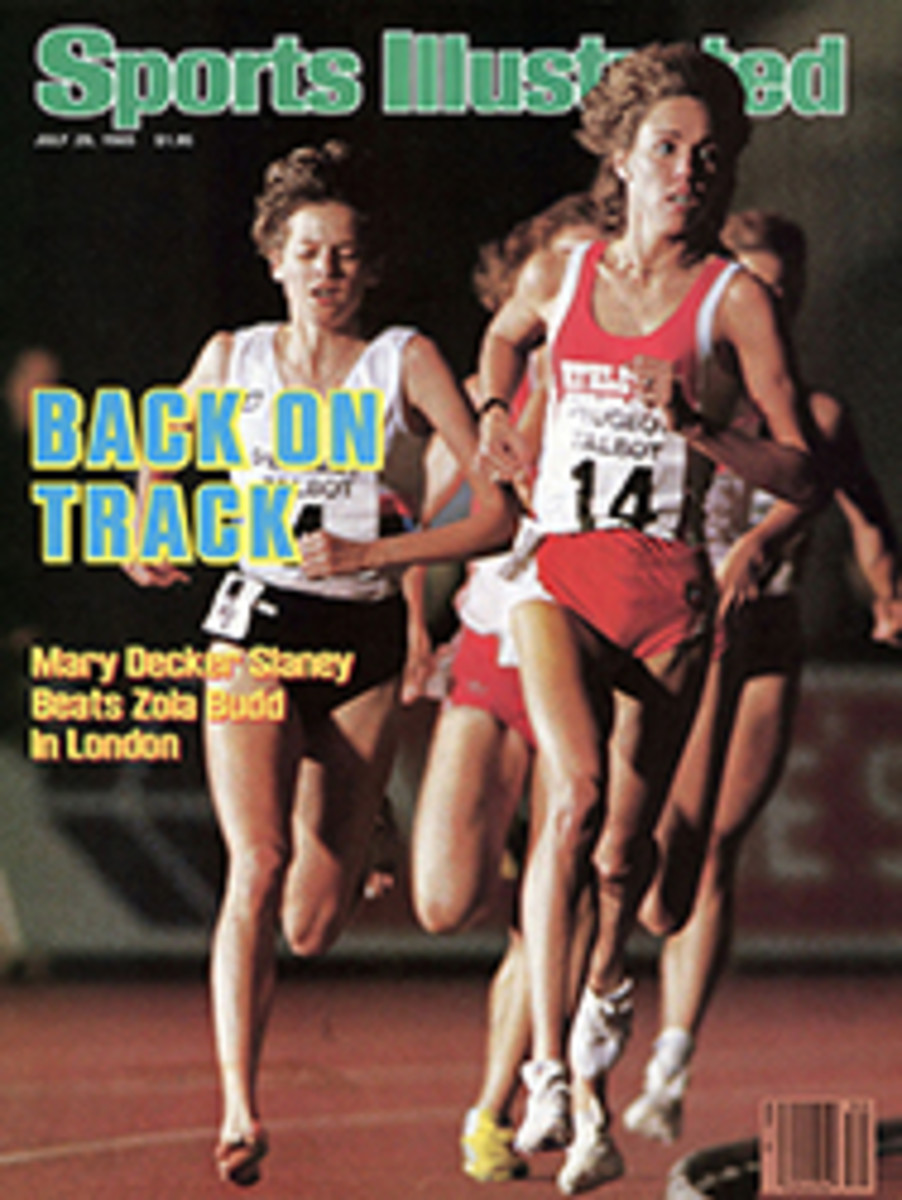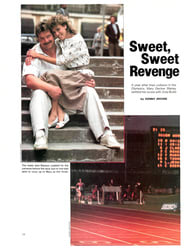
Behold, the 150 mph bicycle
There were times last Saturday afternoon when John Howard was setting all the wrong records. Try this one: the world's fastest flat tire on a bicycle, causing the bike to careen sideways at about 150 mph. Or how about the one for the most salt ever caked to a man's handlebar mustache? But Howard, 37, a seven-time national champ, three-time U.S. Olympian and all-around cycling madman, is not one to pedal off into the sunset leaving an intact record behind him. He would give it another try.
And in one shining moment on Utah's Bonneville Salt Flats, it all came together. His 6'2", 170-pound frame hunched over a strange-looking two-wheeled contraption, his legs pumping out a smooth 130 rpm, Howard set a new world land speed record for bicycles of 152.284 mph.
Howard's triumph marked the climax of a $100,000 campaign to break a record that hardly anybody had heard of in the first place, and now he holds the world mark at both wonderfully obscure ends of cycling's spectrum. In 1982 he set the 24-hour bicycling distance record, covering 514 miles in that time while pedaling around New York City's Central Park.
"A lot of people seem to think I'm crazy," he said Saturday. Well, being crazy works just fine for John Howard. He pulverized the old speed record, a 138.671-mph run at Bonneville on Aug. 25, 1973 by Allan V. Abbott, who rode out in the slipstream of a 1955 Chevy.
The operative word here is slipstream. No cyclist, no matter how mighty of thigh, could achieve such dizzying speeds pedaling alone; he needs the pocket of relatively thin, smooth air that a large, fast-moving object creates behind it.
Start with physics, and then add magic—Howard's bike. "It was years in the making," he says. "Doug Malewicki, the guy who did Evel Knievel's Sky Cycle, designed it. It grew one piece at a time as we figured out how to make it go faster."
Even in repose, Howard's bike seems ready to pounce: It's just 32 inches high and weighs 46 pounds, and features 18-inch wheels; 150-mph-rated tires, each carrying 70 pounds of air; and a fearsome-looking double-reduction gear system with three sprockets and two chains.
"It's a little squirrelly at times," Howard says. "Sometimes I have no idea what's going to happen when I'm riding it at speed."
Even more squirrelly stuff goes on out in front. Howard's pace car is a low-slung, long-nosed torpedo powered by a 350-cubic-inch Chevy engine, a race car with an official top speed of 300.300 mph. Its rear end swoops up smartly to create a boxlike chamber behind which the bike rides. The upper part of the aerodynamic structure has a Plexiglas windshield through which Howard can see the road ahead. Just below the windshield is a rear-facing speedometer and a small sign that says FASTER, YOU FOOL!
Perhaps it's a good thing that world land speed bicycle record runs aren't attempted all that often. Consider the routine: Howard hooks the bike up to the car with a three-foot cable. The car's driver, Rick Vesco, accelerates smoothly, up to 55 mph or so, and then Howard releases the cable. Now comes the crazy part. Howard takes over the car's speed, adjusting it with a radio-controlled throttle on his right handgrip. Vesco merely steers the car—and the two casually discuss their progress by means of their crash-helmet headsets.
The most delicate aspect of the run is staying within the slipstream. "It gets weird," says Howard, "If I wobble or fade too far behind the car, I lose the vortex and crash sideways in the wind. So I gradually advance the throttle, and I can feel myself being sucked in. I'm trying to pedal steadily, and that doggone windshield seems to get smaller and smaller. There's no side vision; my focus narrows, and my thoughts turn to just one thing. Life preservation."
From off to one side on the Bonneville flats, the visual effect was stunning: The teardrop-shaped race car flashed past in a blur, and pedaling along behind it, well clear of the car but still in its draft, came Howard on the cycle. At that speed, one bobble would send him sliding off the horizon.
For two days Howard and Vesco played this dangerous game, riding the six-mile course on the vast salt desert—a crystalline wonderland 100 miles west of Salt Lake City so hard-packed that it crunches loudly underfoot. On Friday afternoon, Vesco hit 137.614, but he was all alone—Howard had dropped out of the slipstream. "The salt was swirling up," he said. "It was like riding through a storm."
But then, relentlessly, they began to dial it in. On Saturday's first run, which started at 8:40 a.m., they reached a smooth 134.308 mph, with both the car and the bike kicking up high-arching plumes of salt behind them. "The record," said Howard, "is ours."
Not quite. On the fourth run, around noon, Howard was thrown skidding and veering out of control with a flat rear tire. "What was it, a blowout?" his crew asked Howard when they caught up with him stranded in the middle of that vast whiteness.
What happened was this: The centrifugal force at that high speed had driven the air inside the tire against the tire's wall, and the pressure was great enough to push the air out through the valve. What was needed, Howard and his crew decided, was a metal valve cap like the one on the front tire.
At four o'clock, on the sixth run of the day, the record crumbled. At the finish line there was great whooping when the official time came in over the radio, and in the blistering afternoon heat a victorious Howard was bathed by a fizzy spray of champagne that had been stored in Styrofoam ice chests for the occasion.
Howard combed the salt out of his 'stache and allowed that this was one more mission accomplished in his madcap life of cycling. Already, another wonderful new idea was taking shape inside his curly head. What if the magic bike, with a few modifications, were turned into a John Howard signature-model touring bike on which riders could barrel across the country at fantastic speeds? Well, why not? "Imagery is important to me," Howard said. "I try to picture what will happen—and then make it happen."
PHOTO
CARL IWASAKI
Howard released himself from the tow, then settled nicely into Vesco's slipstream on the run that broke the 12-year-old record.
PHOTO
CARL IWASAKI
The bike starred an eye-catching double-reduction gear setup.
PHOTO
CARL IWASAKI
Howard controlled the pace car from his bicycle and viewed the terrain ahead through a window.

